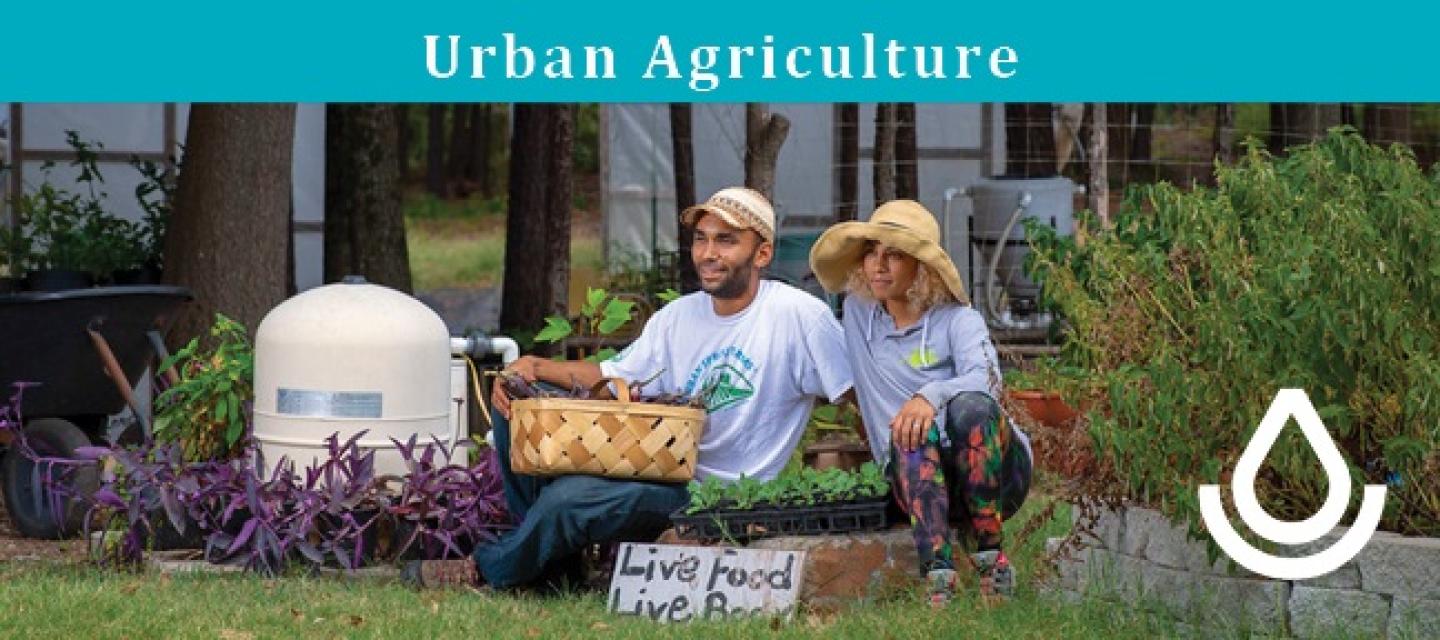Urban Agriculture in Pennsylvania
Urban agriculture pioneers are taking action in their communities, growing not just produce, but also providing jobs, beautifying their neighborhoods, and offering access to fresh, healthy food in areas where grocery stores are sparse.

The USDA Natural Resources Conservation Service (NRCS) in Pennsylvania supports urban agriculture by providing technical and financial assistance to protect and conserve natural resources. These resources include soil, water, air, plants, animals, and energy. NRCS provides technical and financial assistance for assistance for urban growers in areas such as:
- Soil Health
- Water Conservation and Irrigation Improvement
- Weed and Pest Management
- Pollinator Habitat
- High Tunnels
NRCS offers technical assistance to increase soil health and conserve water. Healthy soil means improved production over the long term. Our engineers design efficient irrigation systems to protect water resources.
Enhancing the habitat for beneficial insects and pollinators can mean improved pest management.
NRCS can provide financial assistance for high tunnels, used to extend the growing season and to protect plants from harsh weather, air pollution, and pests. By making local produce available for more months in the year, fewer resources are used to transport food to plates.
Get Started
NRCS can help with the challenges of conservation, and support urban farmers in their efforts to achieve local, healthy, sustainable food for their communities. Start by contacting your local NRCS Service Center.
Watch our Videos
Click here to view the videos!
Areas of Focus
NRCS defines natural resources to include soil, water, air, plants, animals, and energy considerations. Check out the Conservation Concerns Tool at farmers.gov/conserve/tool or make note of the items you’re interested in below to start planning your conservation improvements. Some examples of practices that can address natural resource concerns are italicized.
Soil – reduce or prevent soil erosion; maintain and improve soil health and quality.
Crop Rotation, Cover Crop, Mulching, Residue and Tillage Management
Water - water your crops and/or livestock and improve the water quality on and off your operation; reduce and prevent issues with excess or insufficient water.
Irrigation Water Management, Fence, Watering Facility, Filter Strip, Roof Runoff Structure, Stream Habitat Improvement, Wetland Practices
Air - minimize emissions and drift of particulate matter, pesticides, foul odors, and greenhouse gases on your operation.
Hedgerow, Tree/Shrub Establishment, Field Border, Riparian Forest Buffer, Windbreak/Shelterbelt
Plants - improve productivity and health, increase biodiversity, minimize pests, and reduce wildfire threat.
Nutrient Management, Alley Cropping, Contour Farming, Integrated Pest Management, Forest Stand Improvement, Tree Planting, Conservation Cover, Brush Management, High Tunnel System
Animals - provide feed, forage, water, and shelter for livestock; enhance wildlife habitat or biodiversity.
Forage Planting, Livestock Shelter Structure, Prescribed Grazing, Range Planting, Conservation Cover, Wildlife Habitat Management, Composting Facility, Silvopasture, Waste Management Practices
Energy - improve the energy efficiency of your equipment, facilities, farming/ranching practices, and field operations.
Farmstead Energy Improvement, Field Operations Emissions Reduction

